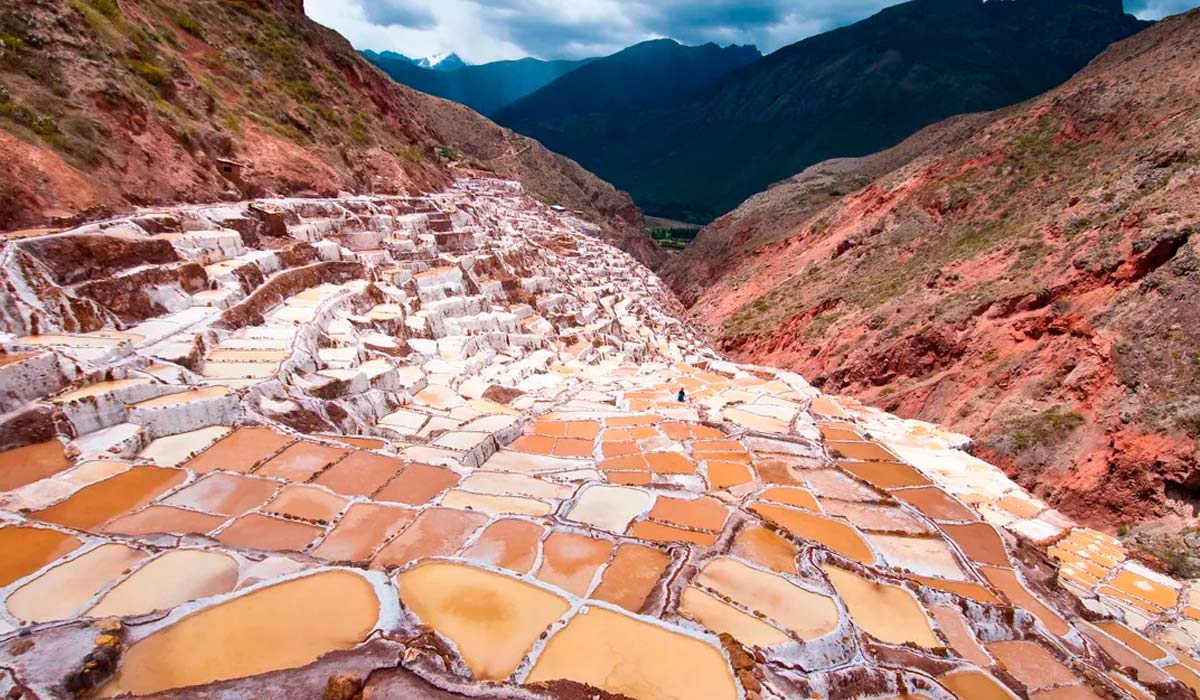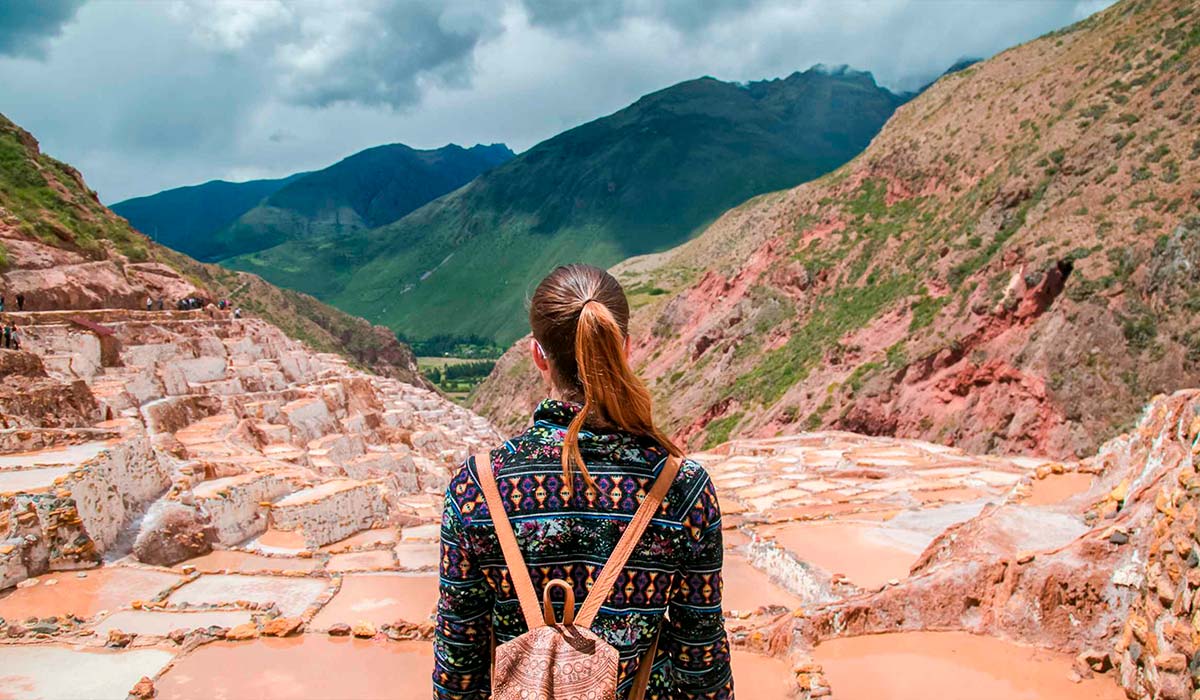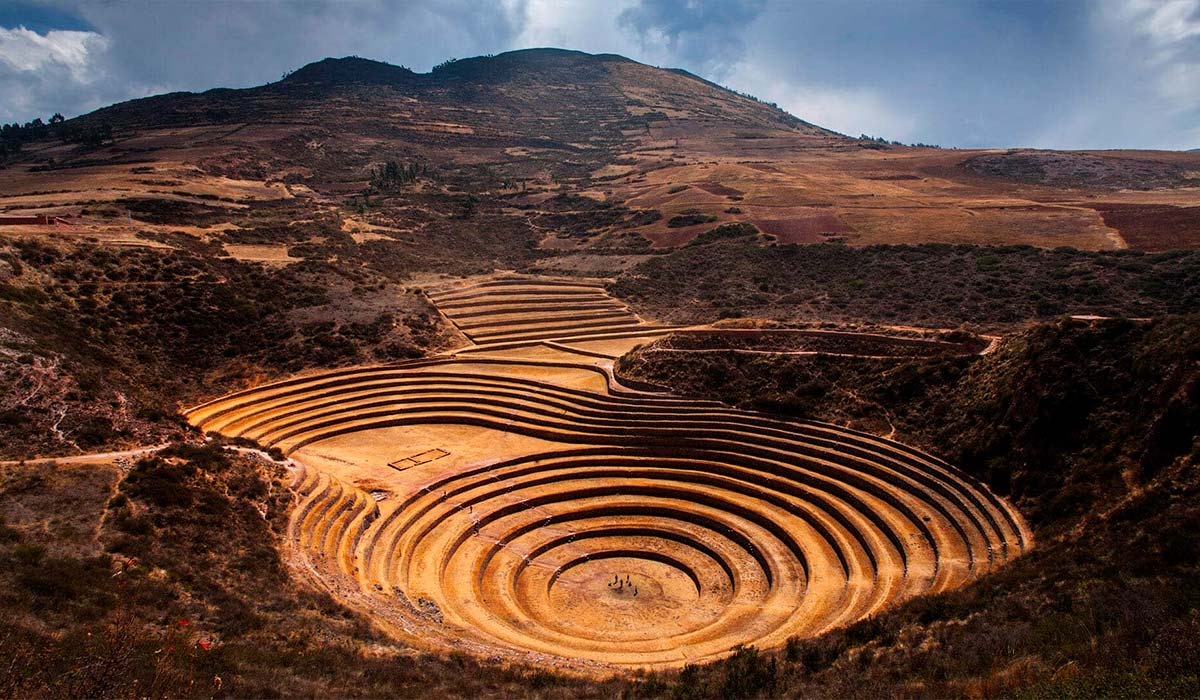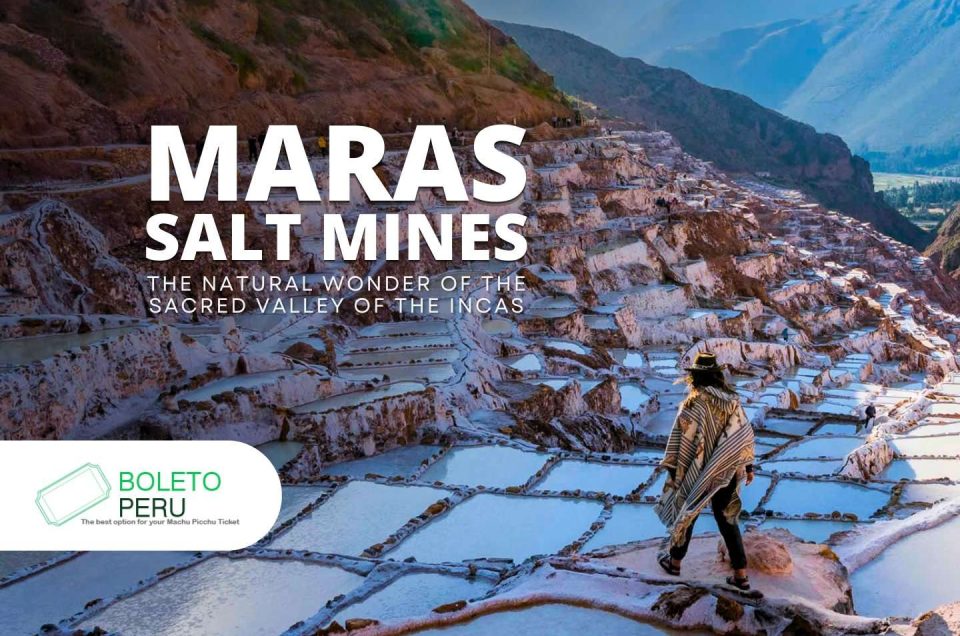In the Sacred Valley of the Incas, you will find one of the most remarkable places in Cusco: the Maras Salt Mines. It is an impressive site with more than 3,000 small salt ponds that descend the slope of the Qaqawiñay mountain. The origin of this natural spectacle is not a river, but an underground spring with a high concentration of salt.
The salt extraction method, based on the solar evaporation of the water that flows through an ingenious system of channels, is an ancient technique that has remained almost unchanged since pre-Inca times, being later perfected by the Incas. Besides being considered a tourist attraction, the Maras Salt Mines Peru are an economic and cultural center, where each of the ponds is owned and managed by families of the Maras community members.
Where are the Maras Salt Mines?
The Maras Salt Mines are located in the Sacred Valley of the Incas, about 40 kilometers north of the city of Cusco and near the town of Maras. They are located at an approximate altitude of 3,000 meters above sea level. The road trip from Cusco takes about an hour and a half, with the paved route via Chinchero being the most recommended for access.
What are the Maras Salt Mines?
The Maras Salt Mines are a salt extraction complex made up of more than 3,000 ponds, with an approximate individual surface area of 5 square meters. These ponds are fed by an underground spring, whose origin dates back to the formation of the Andes Mountains 110 million years ago. The salt obtained through solar evaporation is sold by the families of the Maras community, continuing an exploitation practice that dates back to pre-Inca times. Currently, they constitute an important tourist attraction and salt production center.
The legend
A local legend attributes the origin of the salty waters of Maras to the tears of Ayar Cachi. According to the mythology of the Ayar brothers, which narrates the origin of the Inca Empire, Ayar Cachi was one of the four brothers who came out of the Pacaritambo cave by order of the god Wiracocha. His strength was so immense that he could knock down mountains with his sling, which caused fear in his brothers. In order to continue their journey without him, they tricked him into returning to the cave and locked him inside. The legend says that the sad tears of Ayar Cachi, upon being betrayed, flowed from inside the mountain, forming the ponds that, when dried by the sun, gave origin to the salt mines.
History of the Salineras de Maras
The history of the Maras covers geological, mythical, and historical aspects that have developed over several centuries. Starting with its geological origin, the formation of Maras is due to an underground spring that flows from the Qaqawiñay mountain. The water is distributed into thousands of pools where, through solar evaporation, the salt crystallizes. At the same time, the mythical origin is linked to the legend of the Ayar Brothers, which attributes the formation of these salty waters to the tears of Ayar Cachi, as was detailed in the previous section.
-
Cultures that made use of the place
Historical records indicate that the Wari Culture (7th to 13th centuries AD) was the first to carry out a systematic exploitation of the salt pans. During their rule in the region, they developed and expanded the technique of building pools to take advantage of the natural resource in an organized way.
Later, during the height of the Inca Empire (13th to 16th centuries AD), salt production in Maras was perfected and controlled by the state. Salt was not only a vital economic resource for nutrition and food preservation, but it also had ceremonial value, being used in rituals and in the preservation of mummies.
-
The Salineras de Maras today
Currently, the Salineras de Maras are managed by the members of the local community of Maras and Pichingoto. Each family owns a certain number of pools, and the exploitation continues to be done with artisanal techniques. The ownership and harvesting methods are passed down from generation to generation, maintaining an ancestral tradition that is, in turn, the main economic livelihood of the community.

The Extraction Process and the Pink Salt
The extraction process is artisanal: the water is distributed through channels to fill the pools, and then the intense sun of the highlands evaporates the water. This leaves a layer of salt crystals that are “harvested” manually by the community members, who scrape the salt and place it in baskets to drain the excess water. Once collected, the pool is filled again and the cycle repeats.
The salt obtained in Maras is the renowned pink salt. Its characteristic color is due to the high concentration of natural mineral elements present in the spring water, such as magnesium, calcium, potassium, and silicon. With Maras being one of the few places in the world where this type of salt is extracted naturally and artisanally, its product is highly valued in both gastronomy and cosmetics.
The Town of Maras and its Attractions
Besides the salt mines, the nearby town of Maras, of colonial origin, also has points of historical interest that complement the visit.
- Temple of San Francisco de Asís: It is a notable adobe church with typical religious architecture of the region. Inside, you can find canvases from the Cuzco School that depict the Last Supper and other biblical scenes.
- The Colonial Portals: When walking through the town, you can see numerous carved stone doorways on the facades of the houses. Many of them display shields of indigenous nobles in high relief, a reflection of the importance and prosperity the town had during the colonial era.
- Local Market: Next to the salt mines, there is a local market where visitors can buy the pink salt directly from the producers. In addition to the salt grains, a variety of products made with it are offered, such as chocolates with Maras salt, snacks, bath salts, and other cosmetic items. It is an opportunity to try local products and support the community’s economy.
What to do at the Maras Salt Mines?
The main activity at the Salineras de Maras is observing the unique landscape and the artisanal salt extraction method from the designated viewpoints. It is a site of great photographic value. At the market located at the entrance, visitors can buy the pink salt directly from the producers, as well as derived products like chocolates and personal care items.
It is important to keep in mind that, for conservation reasons, visitors can no longer walk among the pools or collect salt on their own. The visit is done from the upper platforms and paths so as not to contaminate the salt pans.

How to Visit Maras?: Entrances and Tours
The entrance cost to the Salineras de Maras is 10 soles per person (reference price). It is essential to clarify that this site is not included in the Cusco Tourist Ticket. The entrance is paid directly to the local community at the entrance gate. It is recommended to bring cash in local currency (soles), as credit cards and foreign currencies are not accepted for the entrance payment.
Most travelers choose to visit the salt mines as part of an organized tour. Generally, these tours combine the visit to Maras with the archaeological site of Moray in a half-day or full-day circuit from Cusco, which optimizes time and transportation.
How to Get to the Maras Salt Mines?
The salt mines are located about 50 kilometers from the city of Cusco. There are two main ways to get there:
- With an Organized Tour: This is the most common and simple option. Tourism agencies offer tours that include round-trip transportation directly from Cusco, which eliminates the need to coordinate different public transports.
- On Your Own: This option is cheaper, but requires more time. The process involves taking a bus or collective taxi from Cusco to Urubamba, getting off at the turnoff to Maras (Ramal de Maras stop) and, from that point, taking a collective taxi to the salt mines.
Nearby Attractions to Combine the Visit
- Moray Archaeological Complex: Just 10 kilometers from the salt mines is the famous Inca “agricultural laboratory” of Moray. Its circular terraces in the shape of an amphitheater are an almost mandatory visit to complement the trip.
- Town of Maras: The nearby colonial town, which gives the salt mines their name, is known for its traditional architecture and its stone doorways, many of which display noble coats of arms from the colonial era.

What to Bring to the Maras Salt Mines?
For a comfortable visit to the Maras Salt Mines, which is generally part of a half-day excursion, it is recommended to bring the following:
Indispensable
- Cash (in Peruvian Soles for the entrance, bathrooms, and purchases).
- ID or passport.
Sun and Weather Protection
- Hat or cap.
- Sunglasses and high SPF sunscreen (the sun in the highlands is strong).
- Poncho or a light rain jacket (especially from November to March).
Comfort and Equipment
- Comfortable shoes with good soles.
- Camera.
- Water and light snacks.
Recommendations for Planning the Visit
To make the most of the trip to the Maras Salt Mines, it is recommended to integrate it into a tour of the area. These are the most common combinations:
- Combine with Moray: The most popular and efficient way to visit the salt mines is through a tour that also includes the Moray archaeological complex. This “Maras-Moray” circuit is commonly offered as a half-day excursion from Cusco or the Sacred Valley.
- Opt for an Adventure Tour: For travelers looking for a different experience, there are ATV (quad bike) tours that travel the same Maras and Moray circuit. This option combines the cultural visit with an adventure activity.
- Extend the Tour through the Sacred Valley: After visiting Maras and Moray, you can continue the trip to other important points in the Sacred Valley, such as the town of Urubamba for lunch or the fortress of Ollantaytambo, turning the excursion into a full-day tour.

